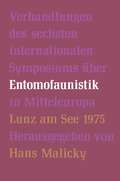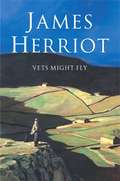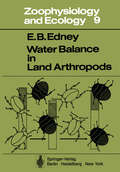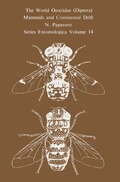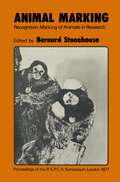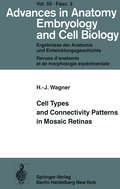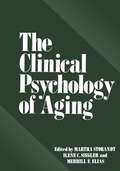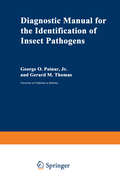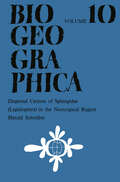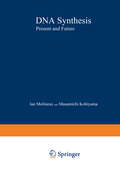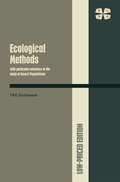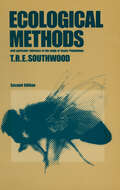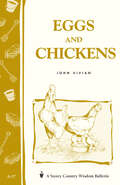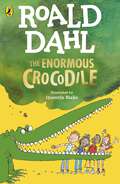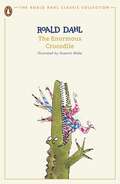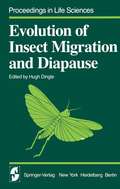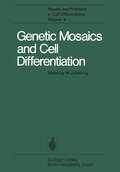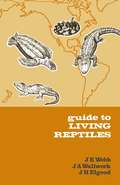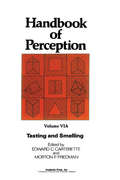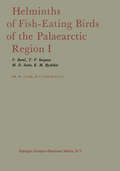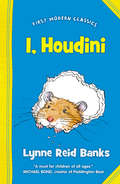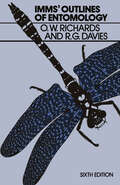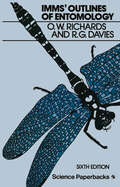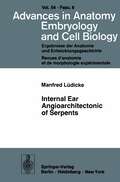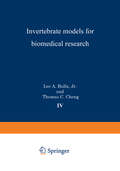- Table View
- List View
Verhandlungen des Sechsten Internationalen Symposiums über Entomofaunistik in Mitteleuropa
by H. MalickyVets Might Fly (Bull's-eye Ser.)
by James HerriotA few months of married bliss, a lovers' nest in Darrowby and the wonders of home cooking are rudely interrupted for James Herriot by the Second World War. From the author whose books inspired the BBC series All Creatures Great and Small, Vets Might Fly, James Herriot's fifth volume of memoirs relocates him to a training camp somewhere in England. And in between square pounding and digging for victory, he dreams of the people and livestock he left behind him.
Water Balance in Land Arthropods (Zoophysiology #9)
by E. B. EdneyWriters on arthropod water relationships range from bio physicists and biochemists to population ecologists-a fact that gives cause to wonder whether the field is already too heterogeneous to be written about in a single book by a single author. I have partly avoided the problem by concentrating largely on physiological mechanisms and by omitting most aspects of behavioural regulation and most aspects of heat balance and body temperature, except when these impinge directly on water balance. Even within this limited field there has been a lot of work during the past twenty years, as a result of which some problems have been solved (or at least more clearly defined), and many others have been opened up. On the whole there has been a welcome change to a more rigorous experimental approach and it is now possible for water balance people to state their problems in physiological terms. Good progress has been made towards understanding the mechanisms involved in nearly all avenues of water uptake and loss, although problems indeed remain. The cuticle has yielded part of its secrets to electron micrography, but ex ploration by means oflipid biochemistry among other techniques is necessary for a real understanding of cuticle permeability.
Cell Types and Connectivity Patterns in Mosaic Retinas (Advances in Anatomy, Embryology and Cell Biology #55/3)
by Hans-Joachim WagnerIn many parts of vertebrate and invertebrate central nervous systems, groups of nerve or receptor cells can be found that are arranged and connected according to a precise, functionally defined pattern (Braitenberg, 1973; Santini, 1975; Strausfeld, 1976; Chan-Palay, 1977). In these cases, groups of cell bodies or synapses appear as basically similar configurations, which, however, are different in detail from each other. Such abstract patterns of connectivity are of a statistical nature and do not allow, in a given example, for the prediction of the localization or connections of a particular cell. "Wiring diagrams", therefore, can be obtained only from a multitude of individual observations. In contrast, in several sensory organs, concrete patterns occur that con sist of a regular, mosaic-like, and geometric arrangement of similar cell types. The constancy of such a mosaic allows predictions about certain units of the pattern on the basis of only a few exemplary observations. Typical examples are found in the visual system: In the compound eye of insects, each ommatidium contains a definite number of visual cells that are grouped around the optical axis in a hexogonal array (Kirsch feld, 1967); in the vertebrate retina, mosaics of geometrically arranged cones are found most frequently in lower vertebrates; they are common among teleosts. A number of studies have dealt with their phylogenetic significance and their functional role as adaptation to specific environments or modes of feeding.
The Clinical Psychology of Aging
by Martha Storandt Ilene C. Siegler Merrill F. EliasIt has been estimated that there are at least 2,500,000 adults, 10% of the population above age 65, who are currently in need of some sort of mental health services (Kramer, Taube, and Redick, 1973). Other estimates are even higher (e. g. , Pfeiffer, 1977). It is expected that this number will increase as the number of older adults increases over the next 40 years. Probably less than 400 clinical psychologists are now provid ing services to this age group. The number of elderly patients actually seen by these psychologists is very, very small. One national survey found that of 353 psychologists who reported that they had older clients, only 495 individuals were seen for psycho logical testing and 1423 for psychotherapy in the one month just prior to the response (Dye, in press). Assuming that the same in dividuals were not seen for both testing and therapy within the one month period--a questionable assumption--approximately . 08% of the at least two-and-one-half million older adults in need of psychological services are now being supplied with these services in some form or another. Thus, the need for increased involvement of clinical psychology with the aged is undeniable. However, few resources currently exist which will serve to increase the number of clinical psychologists trained to meet this need. Probably less than 100 clinical psychologists living today have received any kind of formal graduate training in the clinical psychology of the aging (Storandt, 1977).
Diagnostic Manual for the Identification of Insect Pathogens
by George PoinarThis manual was prepared for the diagnosis of insect diseases caused by infectious agents. The agents (or pathogens) included here are fungi, protozoans, bacteria, viruses, and rickettsias. The present work was prepared after much deliberation and discussion with students and teachers who felt a guide of this type would be valuable for diagnosing the microbial diseases of insects. It was modeled after a seminar given on the same subject at Berke ley, which had as its major goal the recognition and identification of insect pathogens for practical purposes. The present work in cludes numerous timesaving "short cuts" which were developed after years of experience of diagnosing insect diseases. Although emphasis is placed on identification, general back ground information on the various pathogens is also included. Thus, under each of the five groups of pathogens, the following topics are discussed: (1) various types of associations with insects, (2) defini tion and classification, (3) general life cycle, (4) characteristics of diseased insects, (5) factors affecting natural infections, (6) methods of examination, (7) isolation and cultivation, (8) important taxonomic characters, (9) tests for infectivity, (10) storage, (11) an illustrated key to the genera (or group in the case of viruses), and (12) literature, especially that pertaining to identification. Although often included with insect pathogens, entomogenous nematodes are not covered here since illustrated keys to those gen era that infect insects are already available (Poinar, 1975, 1977).
Dispersal Centres of Sphingidae (Biogeographica #10)
by H. SchreiberThe term 'dispersal centre' literally refers to the place from which a dispersal process started. However, it also implies the location of a centre of diversity, frequently even a recent one, as well as the location of a preservation centre or refuge during regressive phases in less remoted periods of earth's history, and that of a possible speciation centre. The latter may have been the place of differentia tion of subspecies, or species, provided that the isolation period has been suffi ciently long. The term deliberately brings the dynamics to prominence which is inherent in the process of dispersal. This dynamics is neither properly recognized when considering ranges 'whose recent structures more or less force us to consider them ,as static entities' (DE LATTIN 1967, p. 16)*, nor adequately taken into account by systematic typology. Yet, it is, in fact, the change that takes place in a range, which is of great significance in evolutionary genetics. In the case of range regressions which may lead to a diminution or rupture of the range pattern according to the pressure of the endogenous or exogenous triggering factors, subsequently arising distribution obstacles may result in a geographical isolation of partial populations or popula tion parts. Their sufficiently long spatial and reproductive isolation and the allele loss resulting from the change of the population size promote a divergent develop ment.
DNA Synthesis: Present and Future (Nato Science Series A: #17)
by M. KohiyamaThis book represents the proceedings of the NATO Advanced Study Institute held in Santa Flavia, Sicily from the 20 - 29th June, 1977. In addition to the review talks given by the Lecturers at the Institute it proved feasible for other topics to be splendidly reviewed. This has led to a much wider subject coverage than would otherwise have been possible. The discussion sessions which followed these review talks were extremely valuable and almost all the participants played an active role. Essentially all of the verbal contributions presented at this ASI were subsequently put into written format, which is why these proceedings are so extensive. ~hey do, however, provide an up-to-date summary of DNA synthesis in a wide variety of subjects with many of the remaining problems clearly expressed. The editing of these contributions has been essentially confined to alterations in style and presentation. We have taken some liberties in the re-organization of the papers into related sections. We express our thanks to those who helped organize the ASI and to the session conveners who attempted to confine and contain those who became too verbose. We are indebted to NATO, Scientific Affairs Division for the financial support that made this ASI possible. Finally, we express our gratitude to Miss Brenda Marriott. She typed all seventy five papers in this book, which was originally estimated to be less than half its present length and which just grew and grew. She deserves our special thanks.
Ecological Methods: With Particular Reference to the Study of Insect Populations
by T.R. Southwoodthe virtual impossibility of extracting the many different species from a habitat with equal efficiency by a single method (e.g. Nef, 1960). 1.1 Population estimates Population estimates can be classified into a number of different types; the most convenient classification is that adopted by Morris (1955), although he used the terms somewhat differently in a later paper (1960). 1.1.1 Absolute and related estimates The animal numbers may be expressed as a density per unit area of the ground of the habitat. Such estimates are given by nearest neighbour and related techniques (Chapter 2), marking and recapture (Chapter 3), by sampling a known fraction of the habitat (Chapter 4-6) and by removal sampling and random walk techniques (Chapter 7). Absolute population The number of animals per unit area (e.g. hectare, acre). It is almost impossible to construct a budget or to study mortality factors without the conversion of population estimates to absolute figures, for not only do insects often move from the plant to the soil at different developmental stages, but the amount of plant material is itself always changing. The importance of obtaining absolute estimates cannot be overemphasized.
Eggs and Chickens: Storey's Country Wisdom Bulletin A-17 (Storey Country Wisdom Bulletin)
by John VivianSince 1973, Storey's Country Wisdom Bulletins have offered practical, hands-on instructions designed to help readers master dozens of country living skills quickly and easily. There are now more than 170 titles in this series, and their remarkable popularity reflects the common desire of country and city dwellers alike to cultivate personal independence in everyday life.
The Enormous Crocodile
by Roald Dahl"For my lunch today", he said, I would like a nice JUICY little child."The Enormous Crocodile is planning what to have for his lunch. He's the greediest croc in the whole river, and he wants to eat something juicy and delicious. But what can the greedy grumptious brute guzzle up? Beware! He's looking for someone to feast upon... someone who looks a lot like YOU!
The Enormous Crocodile (The Roald Dahl Classic Collection)
by Roald Dahl‘I have secret plans and clever tricks.’This beautiful edition of The Enormous Crocodile, part of The Roald Dahl Classic Collection, features official archive material from the Roald Dahl Museum and is perfect for Dahl fans old and new.So, enter a world where invention and mischief can be found on every page and where magic might be at the very tips of your fingers . . .The Roald Dahl Classic Collection reinstates the versions of Dahl’s books that were published before the 2022 Puffin editions, aimed at newly independent young readers.
Evolution of Insect Migration and Diapause (Proceedings in Life Sciences)
by H. Dingle M. A. Hoy C. A. Istock J. Lumme S. Masaki R. C. Rainey M. A. Rankin C. Solbreck T.R.E. Southwood C. A. Tauber M. J. Tauber K. Vepsäläinen G. P. WaldbauerThis volume is an outgrowth of a Symposium entitled "Evolution of Escape in Space and Time" held at the XV International Congress of Entomology in Washington, D. C., USA in August, 1976. The choice of topic was prompted by recent advances in evolutionary ecology and the apparent suitability of insect migration and dia pause as appropriate material for evolutionary studies. In the event, that choice seems amply justified as I hope a perusal of these papers will show. These Sympos ium papers hardly cover the topic of the evolution of escape mechanisms exhaustively, and I am sure everyone will have his favorite lacuna. Some of the more obvious ones are indicated by Professor Southwood in his Concluding Remarks at the end of the book. The purpose of the Symposium, however, was not complete coverage, but rather to indicate the potential inherent in insect migration and diapause for the study of evolutionary problems. In that I think we have succeeded reasonably well. These papers are expanded and in some cases somewhat altered versions of the papers delivered in Washington. This has allowed greater coverage of the topics in question. I suggested a format of a general overview of a topic emphasizing the author's own research con tributions. In general the papers follow this outline although emphases vary. Two of the authors, Dr. Rainey and Dr. Lumme, were unable to attend the Symposium. Dr. Rainey's paper was read by Mr. Frank Walsh, but Dr.
Genetic Mosaics and Cell Differentiation (Results and Problems in Cell Differentiation #9)
by W. J. GehringThe relationship of cell lineage and differentiation is one of the most intriguing problems in developmental biology. In most higher organisms, the analysis of the cell lineage has to rely on indirect methods. Only in the most suitable systems, like the nematodes, can the pattern of cell division be determined by direct observation under the microscope. In cases where this is not possible, the fate of the cells has to be examined by using cell markers. Most suitable for this purpose are genetic markers, provided that they do not interfere with the developmental pathway to be studied. However, suitable genetic markers and techniques for generating genetic mosaics are available in a few organisms only. Therefore, this volume is largely concerned with Drosophila and the mouse, which have been studied most extensively. In 1929 STURTEVANT introduced the analysis of gynandromorphs into devel opmental genetics. However, this important contribution remained largely unnoticed until the late sixties, when the potential of this technique for deter mining embryonic fate maps and the number of primordial cells was exploited, and the methodology extended to the mapping of mutational foci. Mitotic recombination was demostrated by STER:-< in 1936, who realized the potential of this technique for the analysis of cell lineage and pattern formation. The usefulness of this method was substantially increased by the discovery of FRIESEN that mitotic recombination can be induced by x-irradiation. This allows the induction of mosaicism at any stage of development.
Handbook of Perception Volume 6A
by Edward C. CarteretteHandbook of Perception, Volume VIA Tasting and Smelling focuses on the psychophysics of tasting and smelling and covers topics ranging from food technology and the neurophysiology of taste to the chemistry of odor, the neural code, the olfactory process, and chemical signals in the environment. This volume is organized into five sections encompassing 10 chapters and begins with a historical overview of taste research, followed by a discussion on the biophysics and chemistry of taste and its phylogenetic basis in vertebrates. The focus then shifts to the nature of taste qualities, the psychophysical methods of studying them, and the influence on taste sensation of factors such as intensity, duration and area of stimulation. The important phenomenon of adaptation is well covered, with attention to the role of water. The book methodically introduces the reader to the pleasantness or unpleasantness of a food, the physicochemical basis of olfaction, information processing in the olfactory nerve pathway, and the relationship between molecular structure and odor. A chapter on the extraneous stimulation caused by industrial processes, the psychophysical foundation for applications of olfactory research, and real and potential applications in the realm of odor abatement concludes the volume. This book will serve as a basic source and reference work for psychologists and natural scientists, as well as for those who are interested in human perception.
Helminths of Fish-Eating Birds of the Palaearctic Region: Nematoda (Helminths of Fish Eating Birds #1)
by B. Rysavy K. M. RyzhikovI, Houdini: The Amazing Story Of An Escape-artist Hamster (First Modern Classics)
by Lynne Reid BanksHoudini is no ordinary hamster. He is an escapologist with an exceptional talent for getting out of cages and urge to escape leads him to all kinds of adventures…Published into the First Modern Classics list, fantastic stories for young readers.
Imms’ Outline Of Entomology
by O. W. RichardsIn his preface to early editions of this book, the late Dr. A. D. Imms said that he intended it to be an elementary account of entomology as a branch of general biology. He had especially in mind the needs of university students of zoology and agriculture, as well as those intending later to specialize in entomology, and he suggested that the book might also interest teachers of advanced biology'in schools. These general aims and the balance between the different aspects of the subject have changed little in this and in our previous revision. We have, however, tried to bring the present edition up to date on the lines of our revised tenth edition of Imms' General Textbook of Entomology, published in 1977. The text has been entirely re-set and eleven illustrations have been replaced by new figures. The same orders . of insects are recognized as in the last edition, but the sequence in which the Endopterygote groups appear has been changed to reflect more accurately their probable evolutionary relationships. Many small changes and some addi tions have been made in the physiological sections, the chapter on the origin and phylogeny of insects has been rewritten, and a new bibliography provides a selection of modern references for the in tending specialist. It has been our object to make these alterations without materially increasing the length of the book or its level of difficulty.
Imms’ Outlines of Entomology
by O. W. RichardsIn his preface to early editions of this book, the late Dr. A. D. Imms said that he intended it to be an elementary account of entomology as a branch of general biology. He had especiaHy in mind the needs of university students of zoology and agriculture, as weH as those intending later to specialize in entomology, and he suggested that the book might also interest teachers of advanced biology in schools. These general aims and the balance between the different aspects of the subject have changed linIe in this and in our previous revision. We have, however, tried to bring the present edition up to date on the lines of our revised tenth edition of Imms' General Textbook 0/ Entomology, published in 1977. The text has been entirely re-set and eleven illustrations have been replaced by new figures. The same orders of insects are recognized as in the last edition, but the sequence in which the Endopterygote groups appear has been changed to reflect more accurately their probable evolutionary relationships. Many small changes and some addi tions have been made in the physiological sections, the chapter on the origin and phylogeny of insects has been rewritten, and a new bibliography provides a selection of modern references for the in tending specialist. It has been our object to make these alterations without materially increasing the length of the book or its level of difficulty.
Internal Ear Angioarchitectonic of Serpents (Advances in Anatomy, Embryology and Cell Biology #54/6)
by M. LüdickeInvertebrate Models for Biomedical Research (Comparative Pathobiology #4)
by Lea A. Bulla Thomas C. ChengOn August 21-26, 1977, two symposia were included in the program of the 10th Annual Meeting of the Society for Invertebrate Pathology held at Michigan State University, East Lansing, Michigan. One was entitled "Invertebrate Models for Biomedical Research" organized by Dr. Thomas C. Cheng, and the second, organized by Dr. Robert S. Anderson, was entitled "Cellular and Humoral Reactions to Disease by Invertebrate Animals." When the final manuscripts of the speakers were received, it became apparent that all of the papers were so closely related that the editors decided that they should be combined and published in a single volume of Comparative Pathobiology under the subtitle of Invertebrate Models for Biomedical Research. This volume is the result. We hope that volume four will provide the reader further insight into the complexity and comprehensiveness of pathobiology. Pathobiology encompasses not only the study of pathologic conditions but also the biology of causative agents and response reactions.
